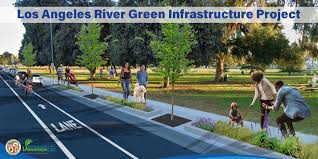Exploring Green Infrastructure Projects for Sustainable Urban Development
In an era of rapid urbanization and climate change, the importance of green infrastructure projects in creating sustainable and resilient cities cannot be overstated. These innovative projects aim to integrate natural elements into urban environments to manage stormwater, reduce heat island effects, improve air quality, enhance biodiversity, and create more livable communities.
One common example of green infrastructure is the implementation of green roofs on buildings. Green roofs not only provide insulation and reduce energy costs but also help absorb rainwater, mitigate urban heat islands, and provide habitat for birds and insects.
Another popular green infrastructure project is the creation of urban green spaces such as parks, community gardens, and green corridors. These spaces not only offer recreational opportunities for residents but also help absorb carbon dioxide, filter pollutants from the air, and provide essential habitat for wildlife.
Furthermore, bioswales and rain gardens are effective green infrastructure solutions for managing stormwater runoff in urban areas. By using vegetation to slow down and filter stormwater before it enters waterways, these projects help prevent flooding, reduce erosion, and improve water quality.
Green infrastructure projects not only offer environmental benefits but also have social and economic advantages. They can enhance property values, promote community engagement, improve public health by providing access to nature, and create job opportunities in green industries.
As cities around the world face the challenges of climate change and urbanization, investing in green infrastructure projects is crucial for building sustainable communities that are resilient to environmental challenges. By incorporating nature-based solutions into urban planning and development, we can create healthier, more vibrant cities that benefit both people and the planet.
Understanding Green Infrastructure: Key Components, Differences, Project Types, and Solutions
- What does green infrastructure include?
- What is the difference between green space and green infrastructure?
- What is considered an infrastructure project?
- What problems does green infrastructure solve?
What does green infrastructure include?
Green infrastructure encompasses a wide range of nature-based solutions designed to enhance the sustainability and resilience of urban environments. This includes projects such as green roofs, rain gardens, bioswales, permeable pavements, urban forests, green walls, and sustainable drainage systems. These elements are integrated into the built environment to manage stormwater, reduce heat island effects, improve air quality, promote biodiversity, and create more livable and environmentally friendly cities. By incorporating these natural features into urban planning and development, green infrastructure helps mitigate the impacts of climate change and foster healthier communities for both people and wildlife.
What is the difference between green space and green infrastructure?
Green space and green infrastructure are related concepts that play distinct roles in urban planning and environmental management. Green space refers to areas of land that are predominantly covered by vegetation, such as parks, gardens, and natural landscapes, providing recreational, aesthetic, and ecological benefits to communities. On the other hand, green infrastructure encompasses the strategic design and implementation of natural elements within urban environments to address specific environmental challenges, such as stormwater management, heat island effects, and biodiversity conservation. While green space focuses on creating open and green areas for public enjoyment and ecological preservation, green infrastructure is more targeted towards using nature-based solutions to enhance the resilience and sustainability of urban landscapes.
What is considered an infrastructure project?
An infrastructure project is typically defined as a large-scale undertaking that involves the construction, development, or improvement of physical structures and systems to support the functioning of a society or community. In the context of green infrastructure projects, this definition extends to include initiatives that utilize natural elements and processes to enhance urban environments, manage resources sustainably, and promote ecological resilience. Green infrastructure projects encompass a wide range of initiatives such as green roofs, rain gardens, permeable pavements, urban forests, and wetlands restoration efforts that aim to integrate nature into built environments for environmental, social, and economic benefits.
What problems does green infrastructure solve?
Green infrastructure projects address a variety of urban and environmental challenges by offering nature-based solutions to complex issues. One key problem that green infrastructure tackles is stormwater management. By incorporating features like green roofs, bioswales, and rain gardens, these projects help reduce flooding, prevent erosion, and improve water quality by capturing and filtering stormwater runoff. Additionally, green infrastructure plays a crucial role in mitigating the urban heat island effect by increasing vegetation cover and providing shade, which helps cool cities and improve air quality. Furthermore, these projects enhance biodiversity, create habitat for wildlife, promote community health and well-being, and contribute to the overall resilience of cities in the face of climate change impacts.

